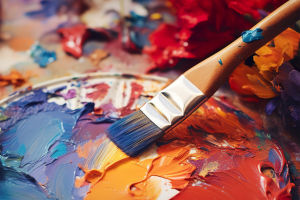Hey Lykkers, have you ever imagined hearing music from a century ago with just a fingernail or a chopstick? Sounds impossible, right?
Today, we're taking you on a time-travel journey into the fascinating world of the phonograph—a marvel that once brought music into homes, long before digital players or smartphones existed.
Let's see how this mechanical wonder still manages to surprise us!
What Is a Phonograph and How Does It Work?
Back in the days before the 1970s, the phonograph was one of the most common audio devices found in households. Unlike modern players, it didn't need electricity. Instead, it worked through a fully mechanical system powered by a hand-cranked spring. Most phonographs had a large horn sticking out of a wooden cabinet, which housed gears, a winding mechanism, and a turntable.
The phonograph played SP (Standard Play) records—thicker discs that spun at 78 revolutions per minute (RPM). Each side of a record could hold about 5 minutes of audio, giving us a total of 10 minutes per disc. These records used steel needles, and after each play, the needle often wore out and had to be replaced.
The Science Behind the Sound
The magic of the phonograph lies in its purely mechanical nature. As the needle moves through the grooves of the record, it vibrates according to the pattern carved into the surface. This vibration is transferred to a diaphragm inside the sound head, which then amplifies it through the horn. No electricity, no digital tech—just mechanics and sound.
Later on, electric turntables came along, using gem-tipped needles and combining mechanical movement with electric signals. These newer models could play LP records at 33⅓ RPM (each side lasting about 30 minutes), SP records at 78 RPM, and even EP records at 45 RPM, just by switching needles and speeds.
A Curious Experiment Under the Moonlight
One quiet night, after winding up an old phonograph and placing a modern LP on it, something extraordinary happened. While the turntable spun, we accidentally touched the groove with a fingernail. To our surprise, we could actually hear faint music coming out—from our fingertip!
It wasn't loud, but even with our ear 50 centimeters away, we could still clearly hear a buzzing tune—like a mosquito humming, yet distinctly musical. That magical moment was both strange and exciting—it felt like we'd stumbled upon a long-lost secret.
Can a Chopstick Really Play Music?
Inspired by that fingernail discovery, we decided to break a disposable wooden chopstick and carefully place the sharp end into the record's groove. And guess what? It worked! The sound was not only louder than the fingernail's but also clearer. That piece of wood had suddenly become a makeshift needle!
Taking the experiment further, we shaved a bamboo stick down to the size of a real needle, and it worked even better. Once installed on the phonograph's sound head, the bamboo needle successfully played music—an amazing fusion of old and new.
When History Sings Again
Some of the records we used were nearly a hundred years old. Hearing the voices and instruments from so long ago playing on a device built without electricity—it was like stepping into a time machine. That moment, filled with scratchy but soulful tunes, made us feel connected to a past generation in a very real way.
Why We Still Love the Phonograph
The phonograph had its golden age a century ago, but time has pushed it into the shadows of history. Few people today understand how it works, and even fewer know how to repair or maintain one. Online resources are scarce, and books about phonographs are hard to find. If we want to unlock their secrets, we'll need to explore them ourselves, one experiment at a time.
Practice Brings Discovery
What we've learned through this hands-on adventure is that even the most overlooked technologies can surprise us. Some ideas may already be known to others, but when we discover them ourselves, the joy and insight feel brand new. As the saying goes, practice leads to true knowledge—and that never goes out of style.
Let's Keep the Curiosity Alive
Lykkers, have you ever tried playing music without using electricity? Or found something old that still works in a surprising way? Share your stories with us—we'd love to hear how you connect with the past! Maybe next time you see a dusty phonograph, you'll take a closer look and give it a spin. After all, we're not just listening to music—we're listening to history.
Let's explore more wonders together!


